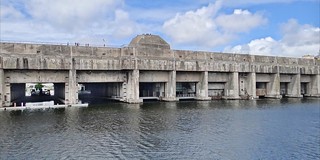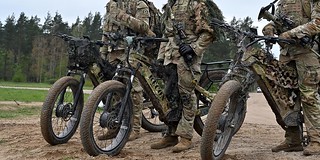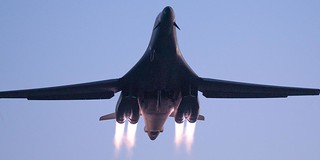The Spanish Armed Forces are working on a new camouflage for their uniforms
The two variants of the M09 pixelated camouflage of the Spanish Armed Forces, wooded and arid, could already have their days numbered.
As Jesús Manuel Pérez Triana pointed out today, the Marine Infantry Bulletin nº37, appeared this month, has published an interesting article titled "The technological evolution of military uniforms" (page 16 et seq.) in which it states (page 20):
"Currently the color pattern in the Spanish Armed Forces is the forest or desert pixelation, but there is a working group at the Ministry of Defense level and in which Navy personnel participate, for the selection by the end of 2024 of a new multi-scenario pattern similar to MultiCamthat will replace the current desert and forest pixelation. In accordance with the upcoming camouflage change in uniforms and with the same objective of optimizing means and avoiding the use of clothing and equipment with different patterns camouflage, the pixelated pattern used in the Marine Infantry combat equipment has already been replaced by a neutral coyote color like other armies such as the USMC or the Portuguese Fuzileiros."
It is the first news that is spread about the introduction of a new camouflage in the Spanish Armed Forces, and it is in line with the trend that is being set in the armed forces of other countries.

The M09 camouflage, as its name indicates, was introduced in 2009. Initially, the Spanish Army began adopting the arid variant, finally replaced by the wooded variant except for units in the Canary Islands and contingents deployed in certain foreign countries. Both the Spanish Air Force and the Spanish Marine Infantry have been using the arid variant until today, although the students and cadets of the Marine Infantry at the Naval Military School have been using the wooded variant in their exercises.

The M09 camouflage emerged at a time when pixelated camouflages were very fashionable. Canada had been using the famous CADPAT since 1997, a pixelated woodland camouflage ideal for the forests of that country and which was added a desert variant in 2002. In 2005 Marines began using their MARPAT pattern, one of the most famous digital camouflages that is still active. MARPAT is available in two variants: wooded and desert, and surely served as inspiration for Spanish camouflage. Likewise, the US Army had introduced digital UCP camouflage with its ACU-type uniforms in 2004, in gray tones and which was not satisfactory in Afghanistan.

It was precisely the War in Afghanistan that called into question digital camouflage and opened the doors to Multicam, a pattern developed in 2002 by the American company Crye Precision. It is a complex and expensive camouflage, but very effective in all types of environments. However, Multicam lost the competition to equip the US Army in 2004, in favor of the UCP, but when this camouflage began to show its defects in the campaign, the use of camouflage was authorized. with Multicam pattern to US Army units in Afghanistan. It was then that this camouflage began to become popular, especially among special operations units.

In Spain it was precisely the special operations groups that introduced the Multicam. The Special Naval Warfare Force (FGNE) of the Spanish Navy began using accessories with the Multicam pattern more than five years ago, and has The use of this camouflage has extended to some of their uniform items, although they continue to frequently use the arid M09. The Special Operations Command (MOE) of the Spanish Army has also adopted Multicam a few years ago, first in its accessories (helmet covers, vests and holsters) and finally in its uniforms.

Spain could have opted for the solution chosen by other countries, which did not adopt Multicam, but camouflages inspired by it, avoiding paying rights to Crye Precision. This is the case of Multi-Terrain Pattern (MTP) camouflage, adopted by the British Army in 2010 and which combines the shapes of the old British DPM pattern from 1960 with the look of Multicam. In 2018, Portugal introduced the M18 camouflage, also inspired by Multicam but with some very original variations.

Currently, Crye Precision offers its Multicam pattern in different variants. In addition to the standard version, which is the most widespread, there is an "Arid" variant for desert environments, the "Tropic" variant for jungle areas in greener tones, the "Alpine" in white tones for winter weather and the "Black" for night operations.

The great advantage of Multicam is that with its standard pattern it is suitable for different types of terrain, since it is equally effective in forests and arid environments, thanks to its gradient color structure.
---
Main photo: Ejército de Tierra. Members of the Special Operations Command (MOE) on an exercise in July 2022, wearing uniforms with Multicam camouflage.
|
Don't miss the news and content that interest you. Receive the free daily newsletter in your email: |
- Most read
- The United States Army shows its electric bicycles for reconnaissance missions
- The firearms used by the Pontifical Swiss Guard, the smallest army in the world
- The Saint-Nazaire submarine base, one of the last bastions of nazi Germany
- NATO highlights and shows the 'air power' of the Spanish aircraft carrier 'Juan Carlos I'
- Eurofighter vs F-35: the opinions of professional pilots on these advanced fighters
- The infiltration of a group of Spanish explorers into the Russian aircraft carrier Minsk
- MSBS Grot, the Polish ambidextrous rifle that manages to rival the prestigious HK416

 ES
ES







Opina sobre esta entrada: